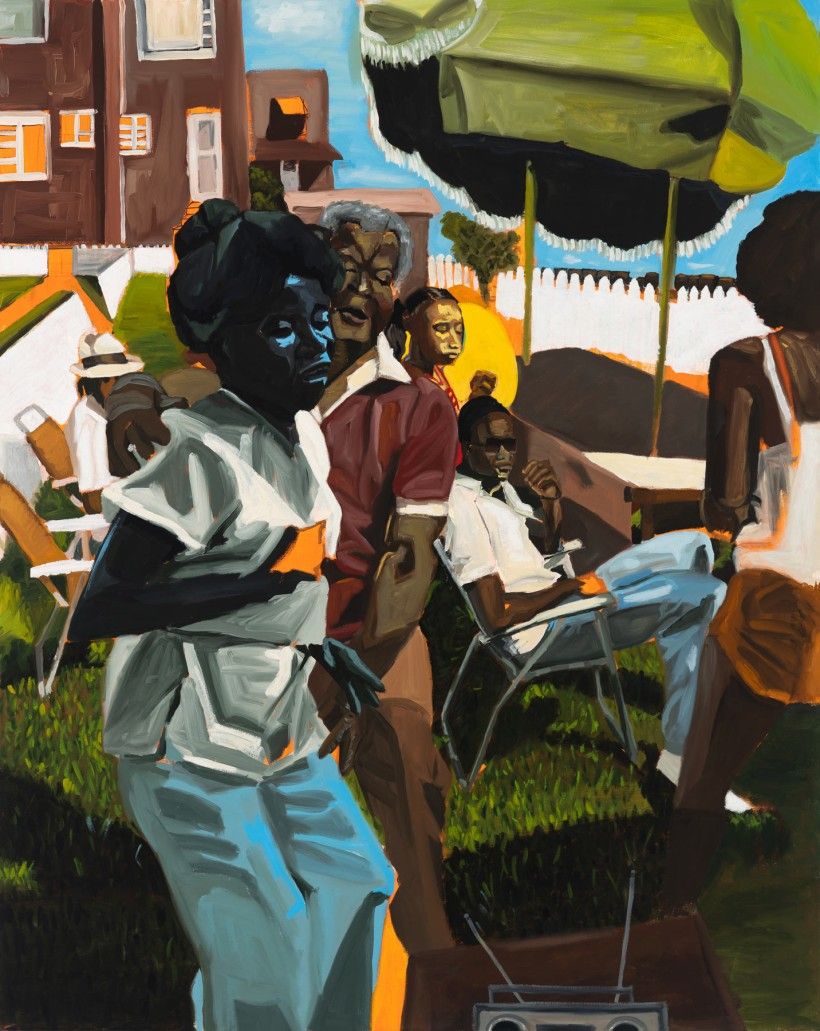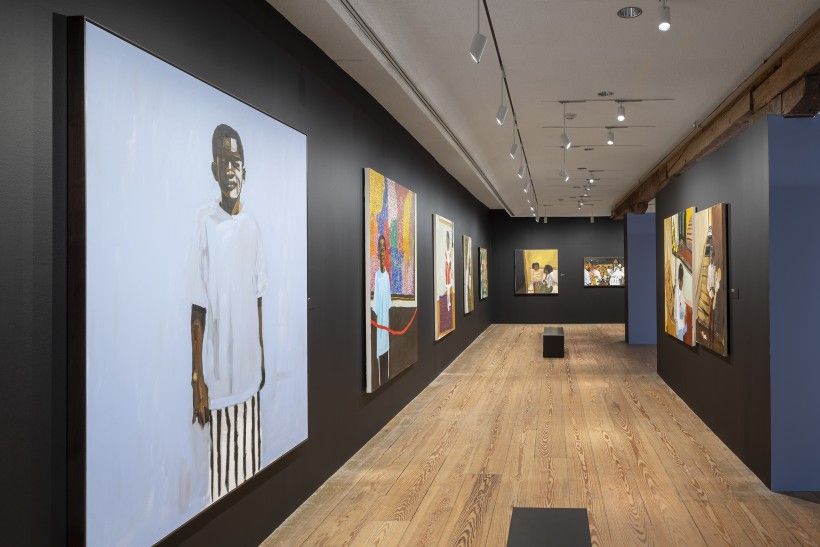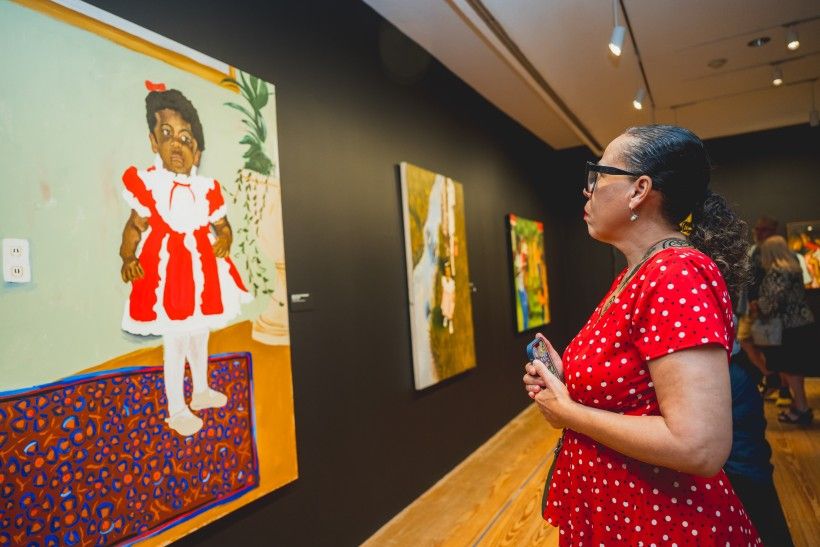Jerrell Gibbs: No Solace in the Shade

Now on view at the Brandywine, Jerrell Gibbs: No Solace in the Shade provides an overview of the career of Baltimore artist Jerrell Gibbs (b. 1988). His dynamic, large-scale figurative paintings of family, friends, and community focus on everyday scenes of Black life, transforming them into monumental moments that highlight the universal themes of identity, reflection, and belonging. Organized by the Brandywine and guest curated by Angela N. Carroll, this project marks the artist’s first solo museum exhibition and first monographic publication. In the interview below, learn more about Gibbs’s process, inspiration, and what he hopes visitors will take away from seeing his work in person.
What were some of the early conversations like while discussing which works to include in this exhibition?
What I wanted people to see in my work was images of my family, my friends, my loved ones, my community, in a different light. I wanted people to see and to be able to appreciate and respect the people that I value and love from the same lens through which I see them every day. That was the goal—highlighting Black men doing things that aren't typically publicized in the media or on social media. Thinking about myself, the males in my family, my friends, and how they love on their children. They’re great fathers, brothers, and husbands, and I was thinking about how to relay those stories.

How do you see your work as relating to the history of American art?
Everything that I paint about is American culture. I can't escape that. I'm from Baltimore, Maryland. You know what I mean? The stories that I tell are of Baltimore, of our America. The Salvador series that I've been working on is a complete reflection of my understanding and experience with American culture through clothing. Right now, I've been really diving into fabrics and materials and clothing that have been a part of my upbringing—Ralph Lauren polo shirts, shoes, Jordans. I'm thinking about all of these cultural signifiers that are specific to American culture, that have influenced different countries and continents. I also think about Andrew Wyeth. I did an exhibition in LA in 2023 at Easy Does It Curatorial Space which was inspired by Andrew Wyeth and David Hockney. I take a lot of inspiration from Wyeth in terms of his subtlety and his way of creating an essence.
You frequently work from photographs, either family photos or found photos—tell us more about this process. How do those pictures turn into paintings?
I start by having an idea, an experience that I want to convey in painting. I have to have lived it, or have had a conversation with somebody really close to me in order to paint the thing. Then I’ll look through my photo albums to find an emotion, gesture, or maybe a fabric that reminds me of what I jotted down. When I find that image—of a figure or maybe a place—then I'll look around to find other images that can work to build up this thing. I'm collaging photos to create a whole idea. I come up with a rough draft in my mind—the outline of the idea, not the painting in its entirety. I don't do sketches, because I allow the process of painting and sketching and drawing to be visible in the work. I want the viewer to be able to experience the entire process of me creating the painting, from the sketch to the underpainting in certain areas, to adding and subtracting the paint.
Your works are full of images of gathering and community. Do you think your paintings prompt the very interactions you love to paint?
That's always the intention. That's why I spent a lot of time focused on universal experiences, because I want the paintings to normalize Black existence at its core, and the way we do that is about understanding our similarities. There's nothing wrong with us having differences, but I think we kind of gloss over the things that make us human. I’m extremely dedicated to replicating my childhood memories and experiences because of the connective tissue that is really there with other people outside of—and within—my community. From my experience, I've seen people from all different walks of life being able to sit in front of a work and talk together about it and share their experiences. And that's where the beauty in the work for me really rests, in the ability to have so many people from so many different walks of life appreciate the work together, talk about it together, bring their similarities and differences to the table. It becomes a sounding board for them to create dialogue and build more community.

What do you hope visitors will feel and reflect on as they move through the exhibition?
I hope they remember a similar experience that they had. Because if they can remember through looking at the painting, then they'll feel something. They'll feel it. And then once they feel it, they'll be able to talk about it. They'll be able to share what it is that they've experienced and how they got through it, or how they love this, too. Once you see it and it reminds you of something that you did or experienced, then you feel it, and then you can reverberate that throughout the space.
